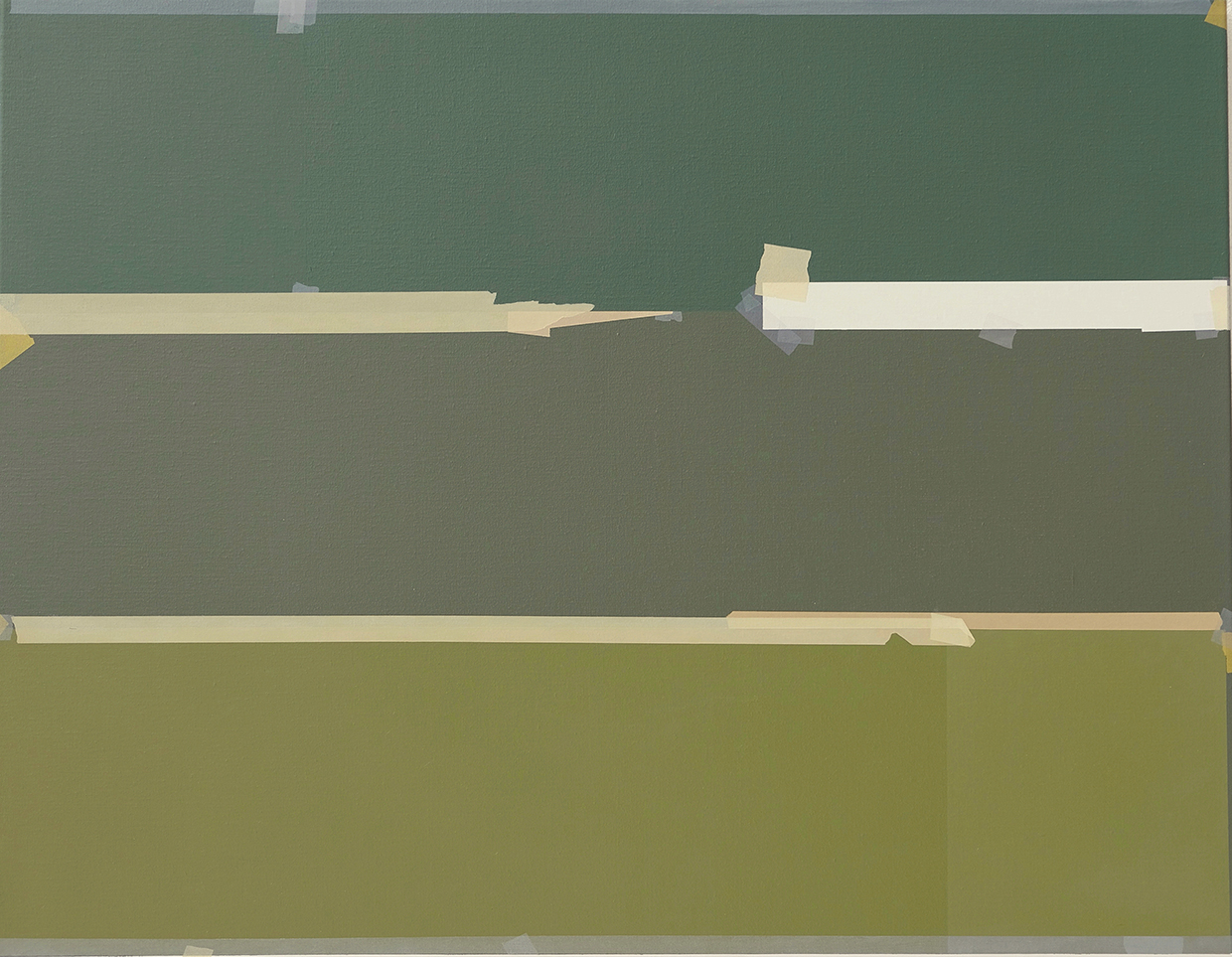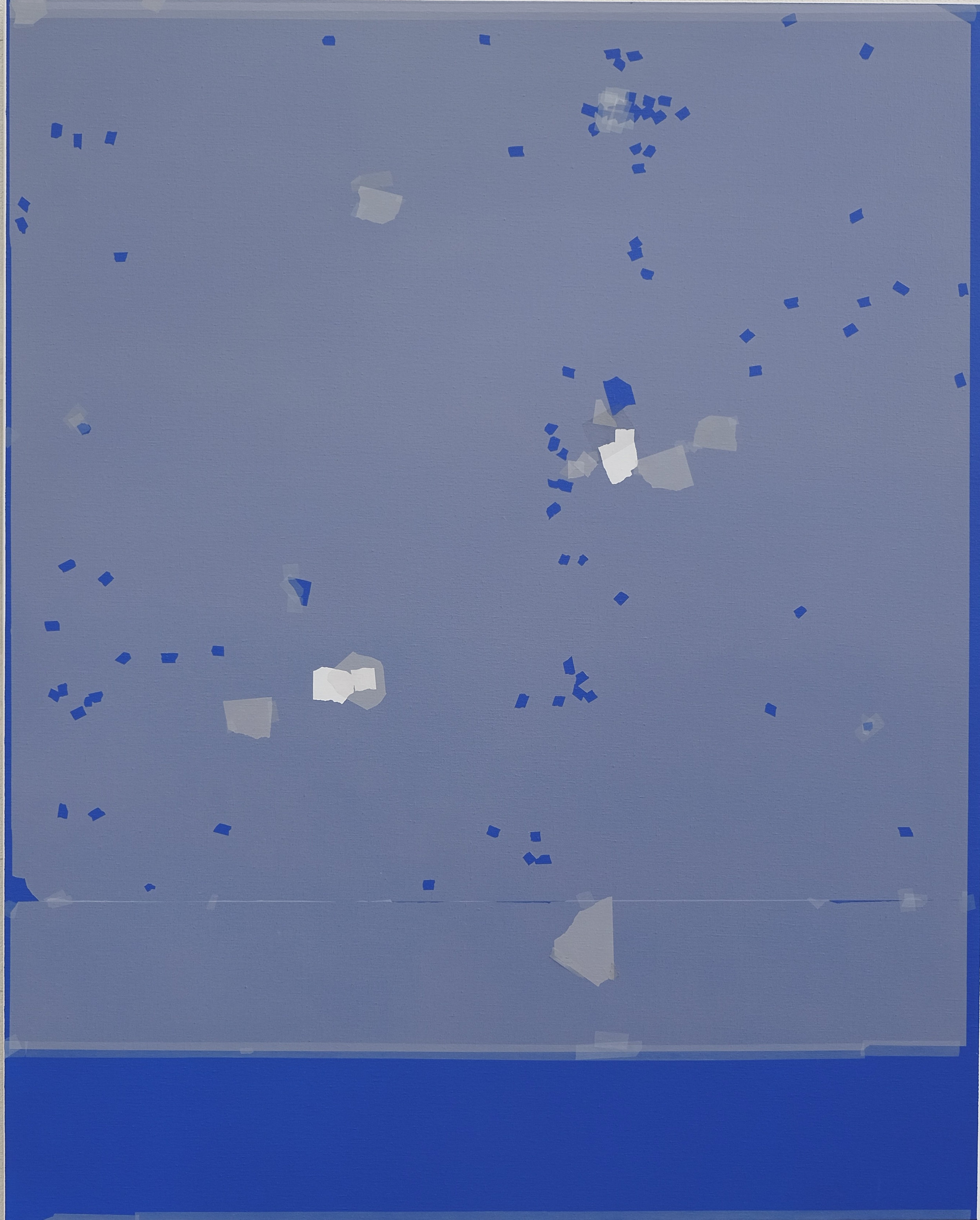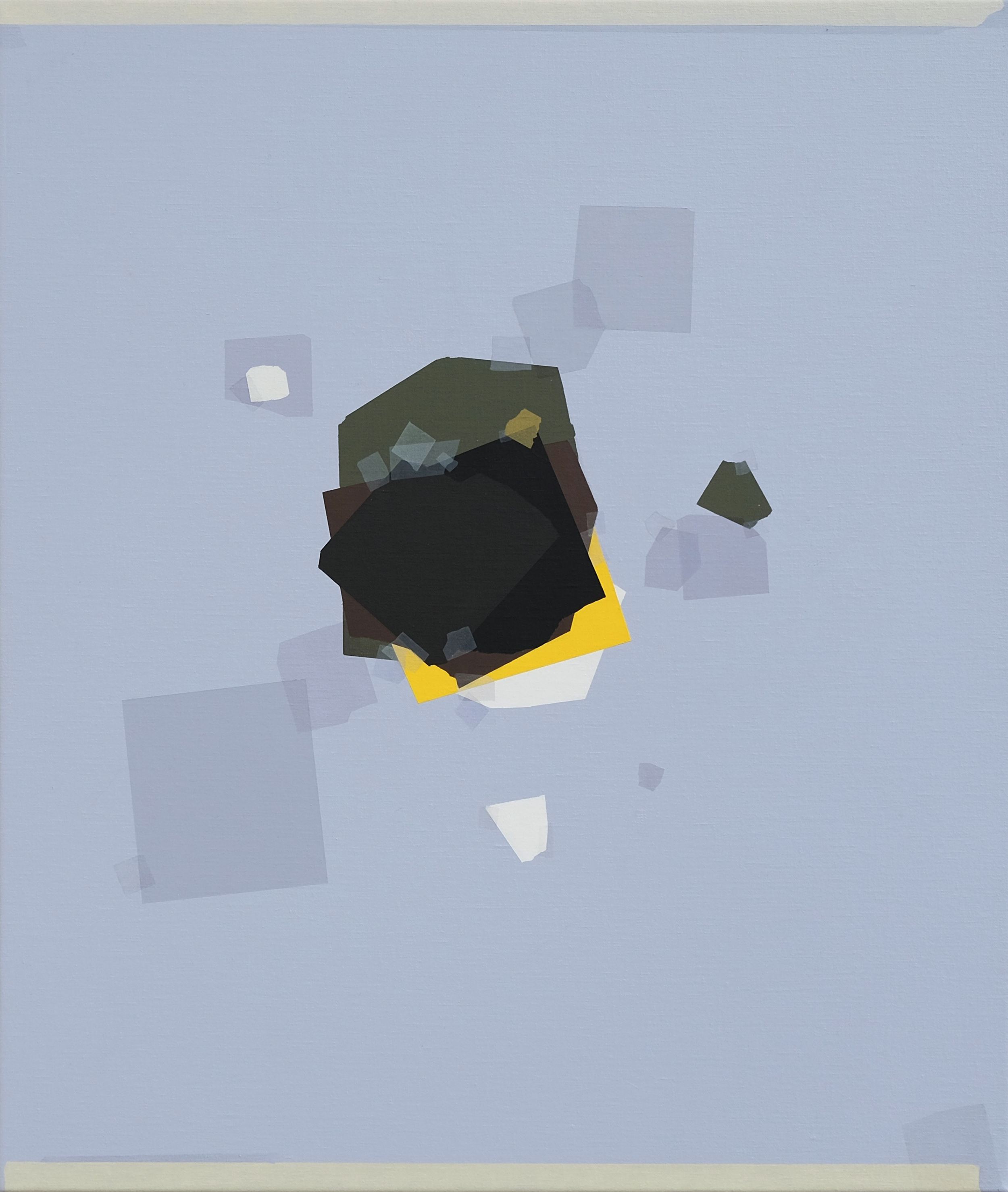Kees Goudzwaard : Nursery Garden

Kees Goudzwaard born in 1958 in Utrecht (NL), lives and works in Arnhem (NL). He has had solo exhibitions at S.M.A.K. Ghent (BE), Museum of Modern Art, Arnhem (NL) and Stedelijk Museum, Schiedam (NL). His work was included in several group shows at Museum Kunst Palast, Kröller-Müller Museum, Ecole Nationale des Beaux Arts in Paris and amongst others. Goudzwaard’s work can be found in the permanent collections of S.M.A.K. Gent (BE), Museum Kunst Palast Düsseldorf (DE), Collectie Nederlandsche Bank (NL) and the Rubell Family Collection Miami (US), amongst others.
Process as Time
The process of Kees Goudzwaard’s works starts from creating a collage of cut-out square and rectangular pieces of coloured paper, acetate and transparent foil, which he composes in more or less regular grids by fixing them with paper masking-tape, then meticulously reproducing the collage on canvas at a scale of 1:1. The process is slow and complex, and develops gradually as it implies numerous decisions and a lot of looking and waiting until the artist finds he has achieved the desired composition and atmosphere. However, painting the collage to canvas gives this artist the freedom to concentrate exclusively on paint and colour, allowing him and consequently his public to turn to the painted image without any source of distraction as the composition and the subject have become in some way insignificant. The marks of the tape on the canvas have a double function: on the one hand they provide a sense of scale and reality to the composition; on the other, by creating different grids and spaces, they become a substitute for the line. Thus the tape itself becomes the element that contains, marks, selects and bears the sign of the artist's hand and of his decisions.
Even if Kees Goudzwaard delegates the formal construction of the image to the technique of collage, as he remains the one who recognizes the potential in an image and chooses how to construct and paint it. He was using an extremely restricted vocabulary to achieve pictorial complexity. At the threshold between abstraction and representation, his large and small compositions can be read not only as abstract colour field paintings but also as still-life representations of paper and tape. Though his paintings are very smooth and devoid of texture, they still have the capacity to create through the various levels of transparency and the nuanced changes of colour a sense of perspective space. The strong three-dimensional and realistic presence of these works deceive the viewer into the actual existence of different planes, has justified their insertion into the tradition of Flemish trompe l'oeil painting.
The New Possibilities of Contemporary Painting
The concept of Kees Goudzwaard’s work is related to his education and the beginning of his career (mid eighties and early nineties) coincide with 'post-modernism', the insurgence of photographic appropriation strategies and the much-proclaimed death of painting (American abstraction in particular) as well as the birth of neo-expressionism and cannot be fully understood outside this critical context. Kees Goudzwaard's programmatic decision to develop oil paintings of abstract collages he has himself craftily created becomes a way of demonstrating the new possibilities the notion of appropriation has opened for painting. His work also challenges, through repetition and reproduction, ideas of authorship, originality and meaning, questioning the fundamental roots of abstract painting's modernist legacy while reclaiming the pleasure of the act of painting. The hard work of transferring onto canvas a two-dimensional object he has himself created allows him to reacquire authorship of an image that doesn't seem to imply any creativity.
Even if his paintings' repetitive structure could suggest that there is no space except self-referentiality, his works actually refuse to acknowledge the exhaustion of painting as a practice. The reason that Kees Goudzwaard's oil paintings seem in some way open, unfinished, is because he has decided to separate the moment of editing from the moment of painting. This tendency derives from an unconsciously acquired skepticism, from an impulsive rejection of the idea of permanency and eternity linked to painting. These interventions are not just auto-reflexive, post-modern exercises, but are born out of the desire to sample new issues and question, without erasing the trace of the artist's hand. Ultimately, the work is twice removed from its author allows it to acquire an independence that explains its strong and silent physical presence.
The Expression of Silence
Kees Goudzwaard's works is silent and no narrative. In order to find a way of communicating directly with his public, Kees Goudzwaard needs to operate in a purely pictorial universe made of colour, space and depth; a universe made of transparencies, borders and grids that, though visually totally two-dimensional, offers a layered visual experience and allows each viewer the freedom to emotionally relate to colour and shape. Thus the way the formal composition is structured and the absence of background and foreground distances Kees Goudzwaard from any idea of representation and transforms each painting into pure surface. His practice with a form of fascinating honesty (underlined by the use of oil paint) is seldom found in contemporary painting. It is as if he were painting for himself by stubbornly trying to defy the imperatives of innovation and development. Therefore, no one can deny the fact that Kees Goudzwaard still feels the need and the desire to paint. This is why Kees Goudzwaard's paintings can at the same time be so conceptually controlled yet emotionally charged.
Not Only Repetition and Reproduction
At the same time, this prompts the question of why Kees Goudzwaard’s work can't be dismissed as a technically perfect and highly seductive and obsessive activity of copying self-made models. Instead, Kees Goudzwaard's work has such a direct emotional appeal because his creativity manifests itself in the first phase of composing the paper and tape collages, it is the slow process of creating the paintings that allows him to capture time as a solid entity. The painstaking production process is simply a means to an end, which is complex, aesthetical and conceptual. We gain the capacity to imagine time without events: time as a totally abstract monolithic concept. This is why his production process becomes conceptually important.
Through his practice Kees Goudzwaard questions the acceleration of cultural production and its commodification; it is as if by obsessively reproducing in his perfect paintings a form of suspension he was trying to resist consumption. His works are thus not silent objects but become agents that can whisper to each spectator an atmosphere that testifies to painting's unabashed communicative power.
This article is edited from "Process As Time" by Ilaria Bonacossa.


